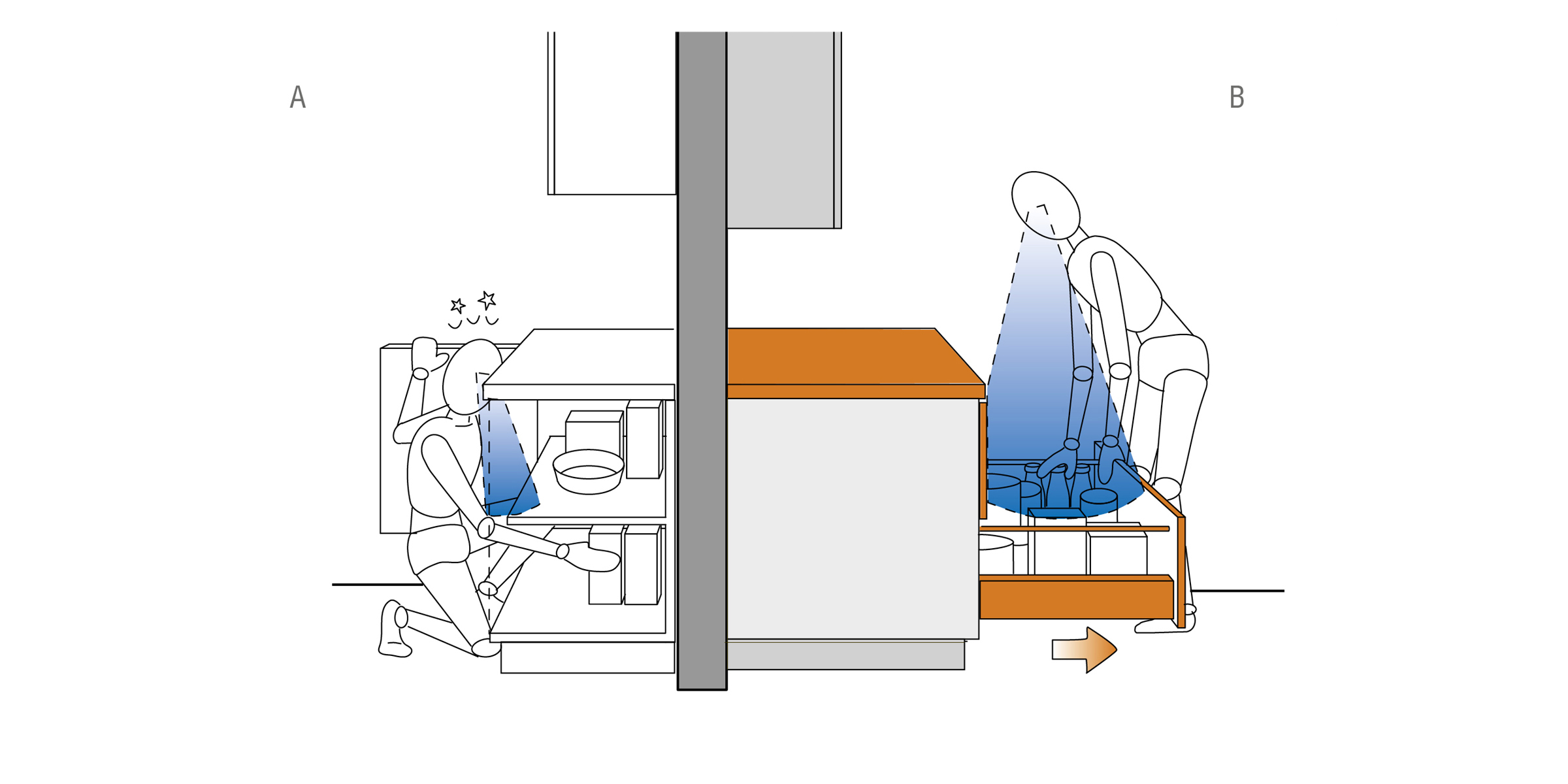Gruppo Cucine, who has always been very attentive to the requirements of the end user, has carried out careful analyses on the use of traditional kitchens and has perfected some methods aimed at improving the interaction between man and the entire kitchen “system”.
Ergonomic routes
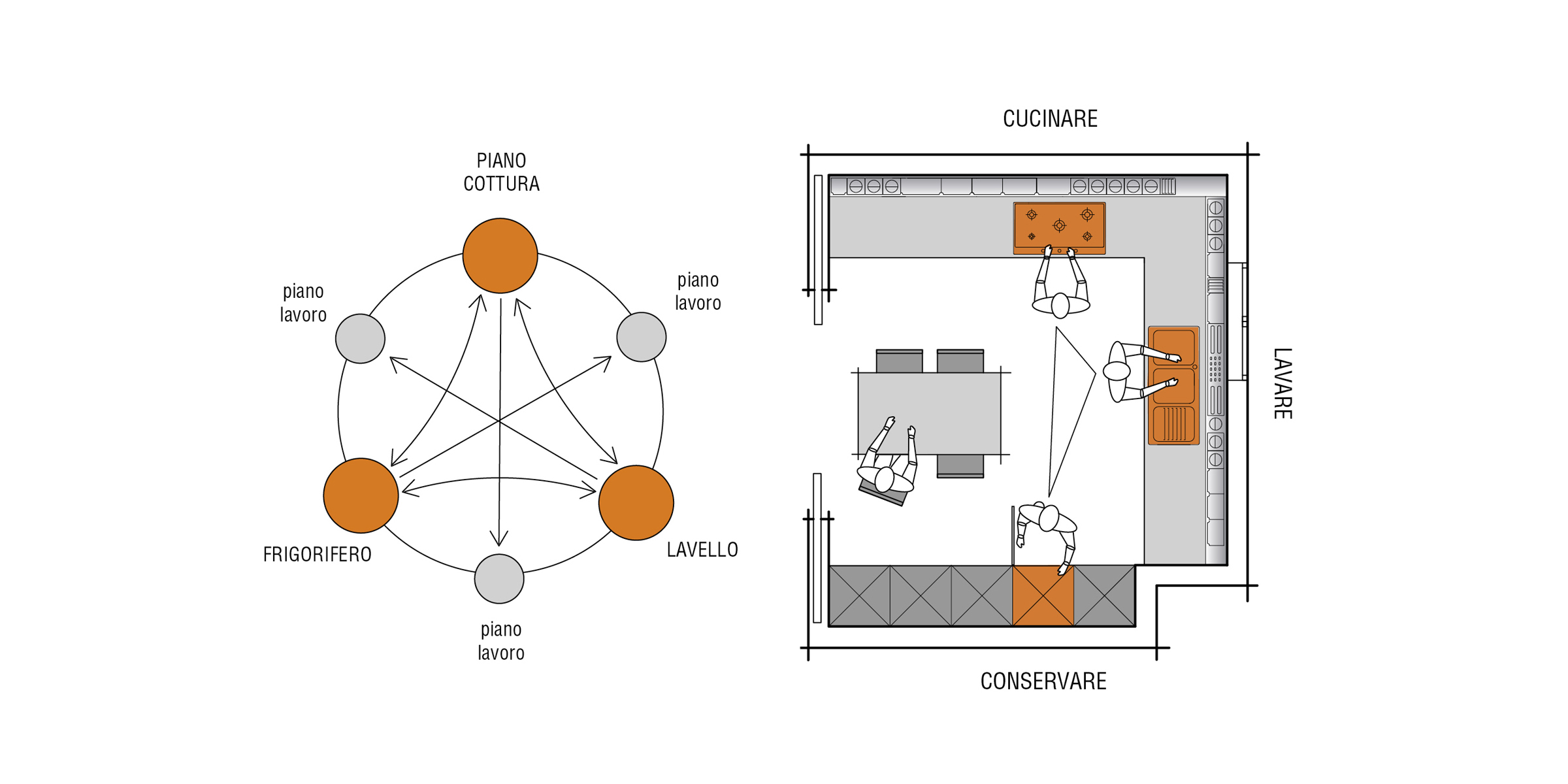
Working in the kitchen can be very tiring, notwithstanding the help given by many accessories and by electrical appliances. Good space organisation can reduce obstacles and unnatural and useless movements.Arranging various kitchen areas by respecting distances and organising logical routes is the starting point to make work in the kitchen creative and fun. A simple rule is to connect the preserving area (larders, refrigerator), the washing area (sink,dishwasher) and the cooking area (hob), by means of small triangles. The sum of the three sides that connect them should not exceed 650cm. In an ideal kitchen arrangement, the three areas should be divided by worktops.
HEIGHT AND DEPTH OF WORKTOP
To work standing before a worktop that is too low or too high obliges the person to assume incorrect postures that, in the long run, can have serious consequences on physical health. Due to the fact that the average height of mankind is increasing, it is advisable to offer worktop heights that vary depending on the needs of the user. This way, he/she will work more comfortably.
Valcucine offers various worktop heights depending on the height of the person.
It is important to choose the height of the worktop at the outset because it determines the position of the electric sockets, the position of the wall units and the height of the hood flue outlet.

Traditional 60cm deep base units have now evolved towards greater and more ergonomic depths. Valcucine offers the 65cm depth and the 80cm deep system. By increasing the depth of the base units, it is possible to lower the wall units, that will be in a more ergonomic position.
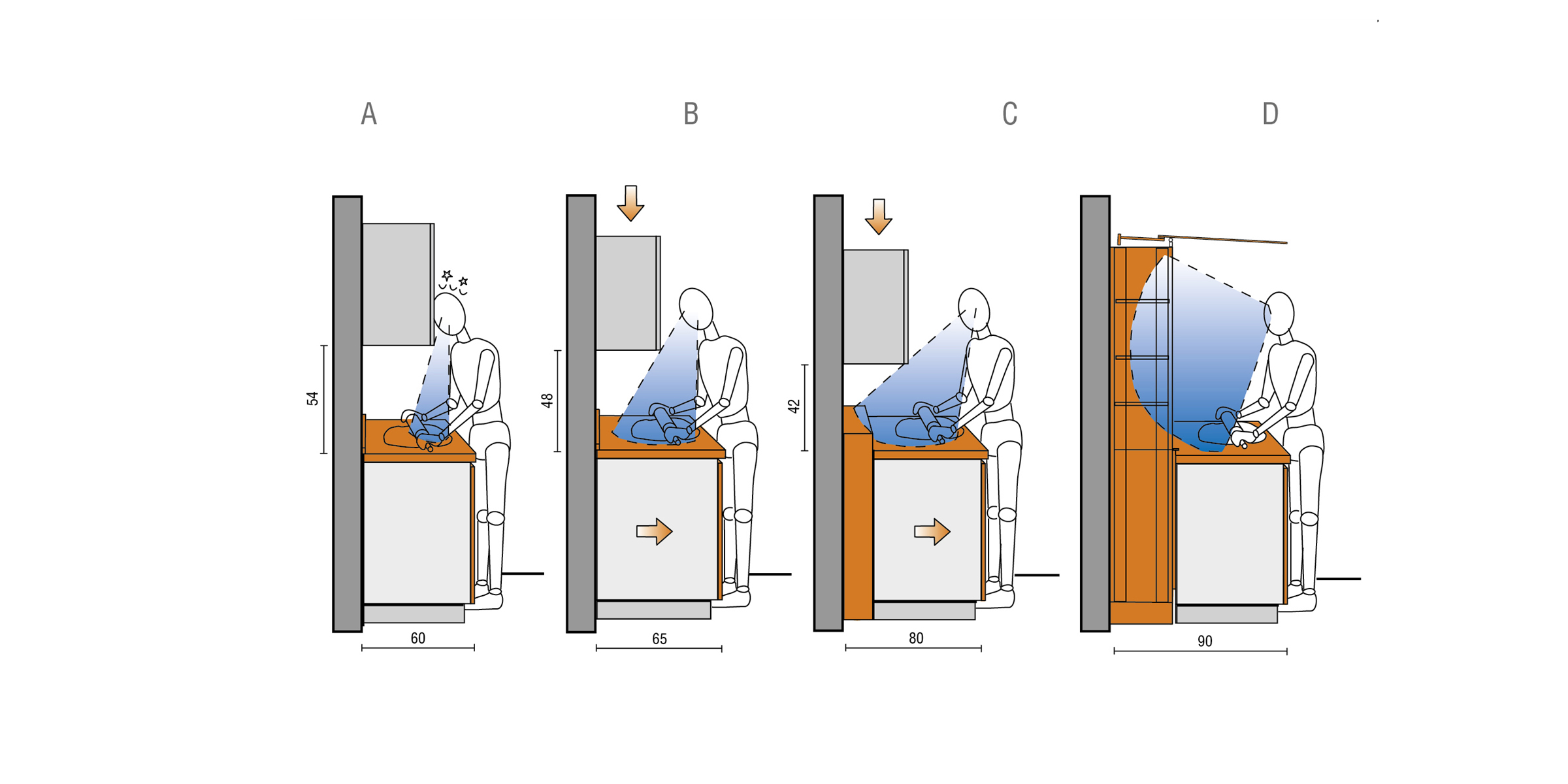
A - For the traditional 60cm depth, the recommended height of the back panel is 54cm, which is required to allow for sufficient visibility of the worktop. However, the wall unit creates a couped up feeling and its position makes it difficult to see and take the contents out.
B - By increasing the depth of the base unit to 65 cm, it is possible to lower the wall unit that is then easier to see and reach. This gives you more freedom of movement and better visibility on the worktop. The recommended height of the back panel is 48 cm.
C - The 80cm depth, consisting in a special equipped back section and a 60 cm base unit, gives better visibility on the worktop. The recommended distance of the wall units from the worktop is 42cm. The contents of the wall unit are completely visible and accessible even on the top shelves.
The new ergonomic P20 system
In general the back of the worktop is not used in traditional kitchens. Valcucine, with its 80cm deep worktop, makes the most of this space and exploits it by fitting the back section and by adding practical and functional containers that are perfectly integrated with the worktop.
The containers are 20cm deep (like the equipped back section and the P20 hood). They are available in sizes that differ both in width and in length and can be fitted between the worktop and the P20 hood, or between the worktop and the wall units.
They can contain small appliances, a chopping board, electric sockets, various kitchen utensils and small shelves and racks.
80 cm DEPTH: LOGICA SYSTEM- THE ADVANTAGES
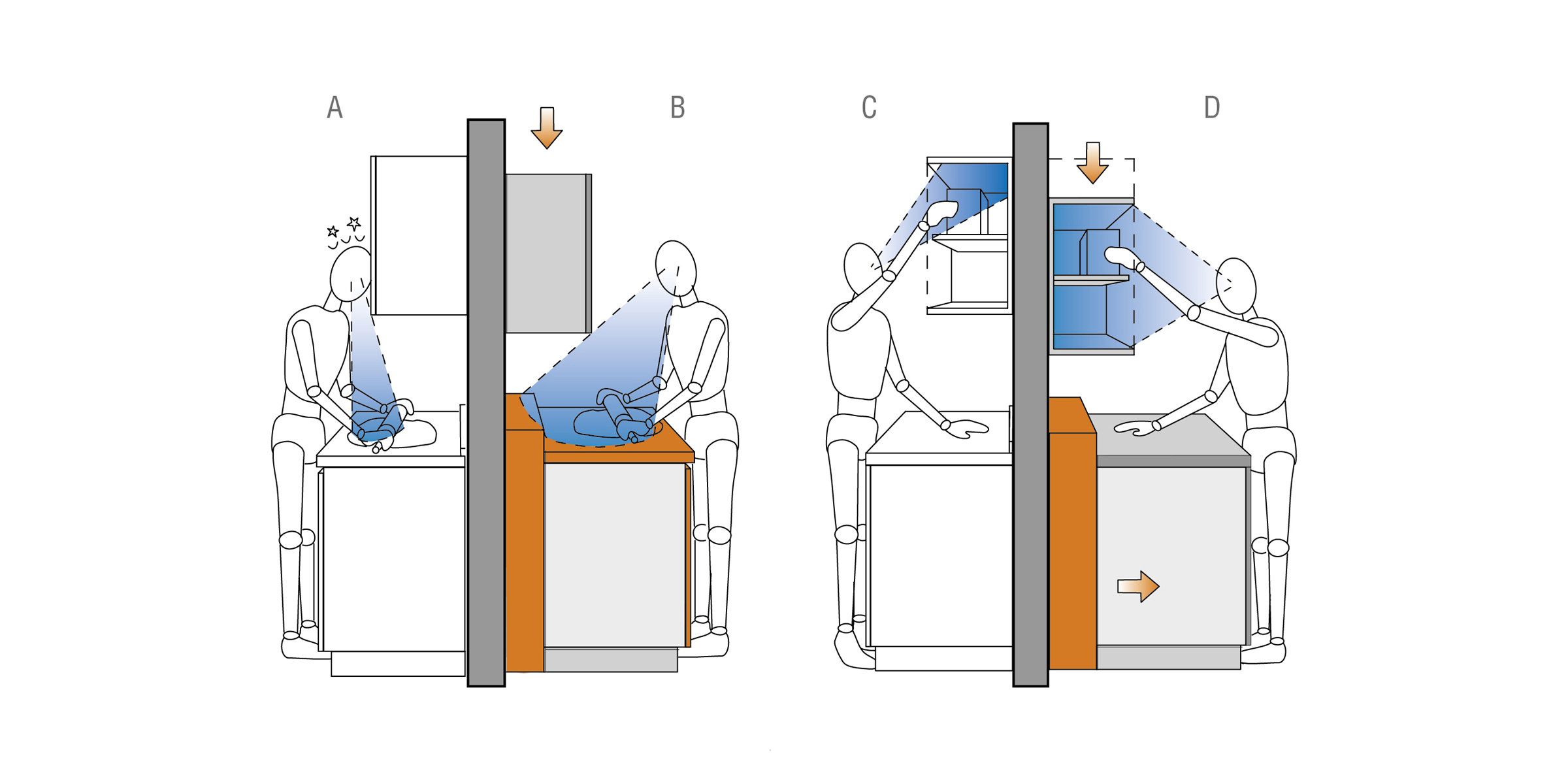
A - With the traditional 60cm depth, even if the back panel is higher, the wall unit gives you a claustrophobic feeling and blocks the view of the worktop during food preparation.
B - The 80cm depth offers the possibility of working on a larger surface, at a safe distance from sharp edges and wall units, eliminating that couped up feeling and giving you more freedom of movement while improving the view on the worktop that can now be used to the full.
C - A traditional wall unit is usually installed at a height that prvents you from having a complete view of the objects located on the top shelf, making it difficult to use, especially for short people.
D - The 80cm depth allows you to stand further away from the wall units which can now be lowered, making them more visible and accessible and increasing the space in front of them.
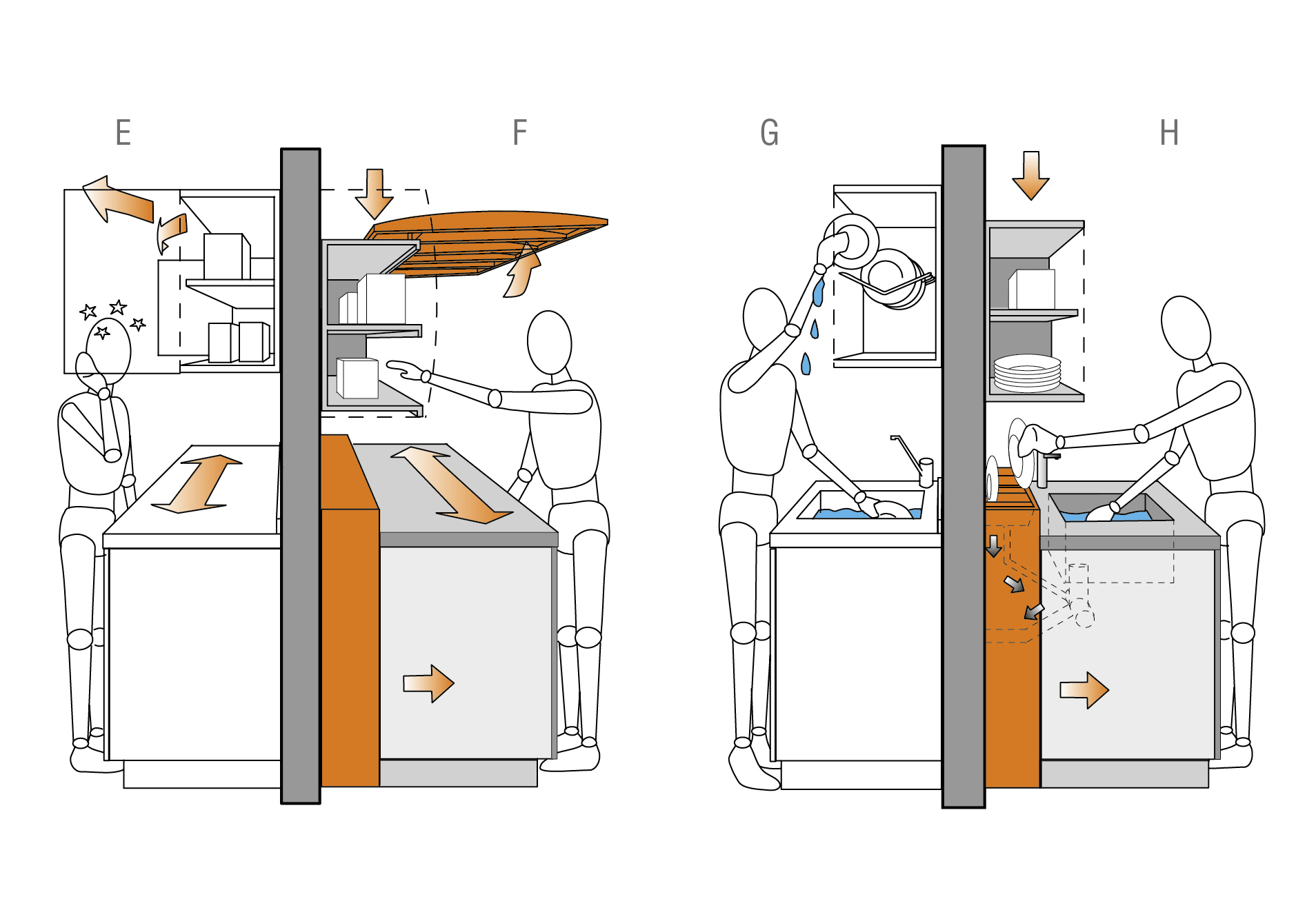
E - Wall units with traditionally opening doors are an obstacle and give you a closed-in feeling. Furthermore, due to the fact that the door often remains open, it is extremely likely that you will bump your head when moving around.
F - The balanced lift-up door can stay open all the time necessary and allows you to move around sideways and bend over with no fear of bumping or banging your head.
G - The dish drainer installed at a traditional height is awkward to use: the movement to put the plates away is unnatural and tiring and it is inevitable for water to drip down your arm. The dish drainer attached to the wall unit is also difficult to clean.
H - The 80cm depth makes it possible to fit the dish drainer inside the back panel, behind the sink. It is possible to put the plates to drain without tiring yourself and without water dripping down your arm. The dish drainer is connected directly to the trap for water drainage.
Minimum distance
B - To allow a person to work and even open doors and drawers behind a person seated, it is necessary to leave a minimum distance of 135cm between the edge of the table and the unit behind it. If the unit is 80cm deep, this distance must be increased by 15cm.
C - To determine the distances to leave between the worktops and other elements situated in front of them, it is necessary to keep in mind the space required for people to move around and of the room taken up by appliances and base units with their drawers or doors open.
D - A free space of one metre must be left in front of the dishwasher to allow for loading and unloading. For another person to walk behind the first one during this operation, the empty space must be increased by an additional 70cm if there is a wall on the opposite side.

Suspended Kitchens
B - The wall-hung kitchen is ideal for floor-heating because it removes all obstacles for perfect heat diffusion.
FIXING A WALL-HUNG KITCHEN
C - Steel L-shaped supporting brackets are supplied to fix a kitchen to a load-bearing wall. To avoid accidentally drilling the pipes inside the wall it is important to use an instrument that detects their exact position.
D - If the base units are fixed to an interior partition wall, add feet to support part of the weight. It is advisable to fit a quantity of feet that guarantees a distance between them of 120cm.The feet supplied by Valcucine are so slim that they do not detract from the beauty of the kitchen.
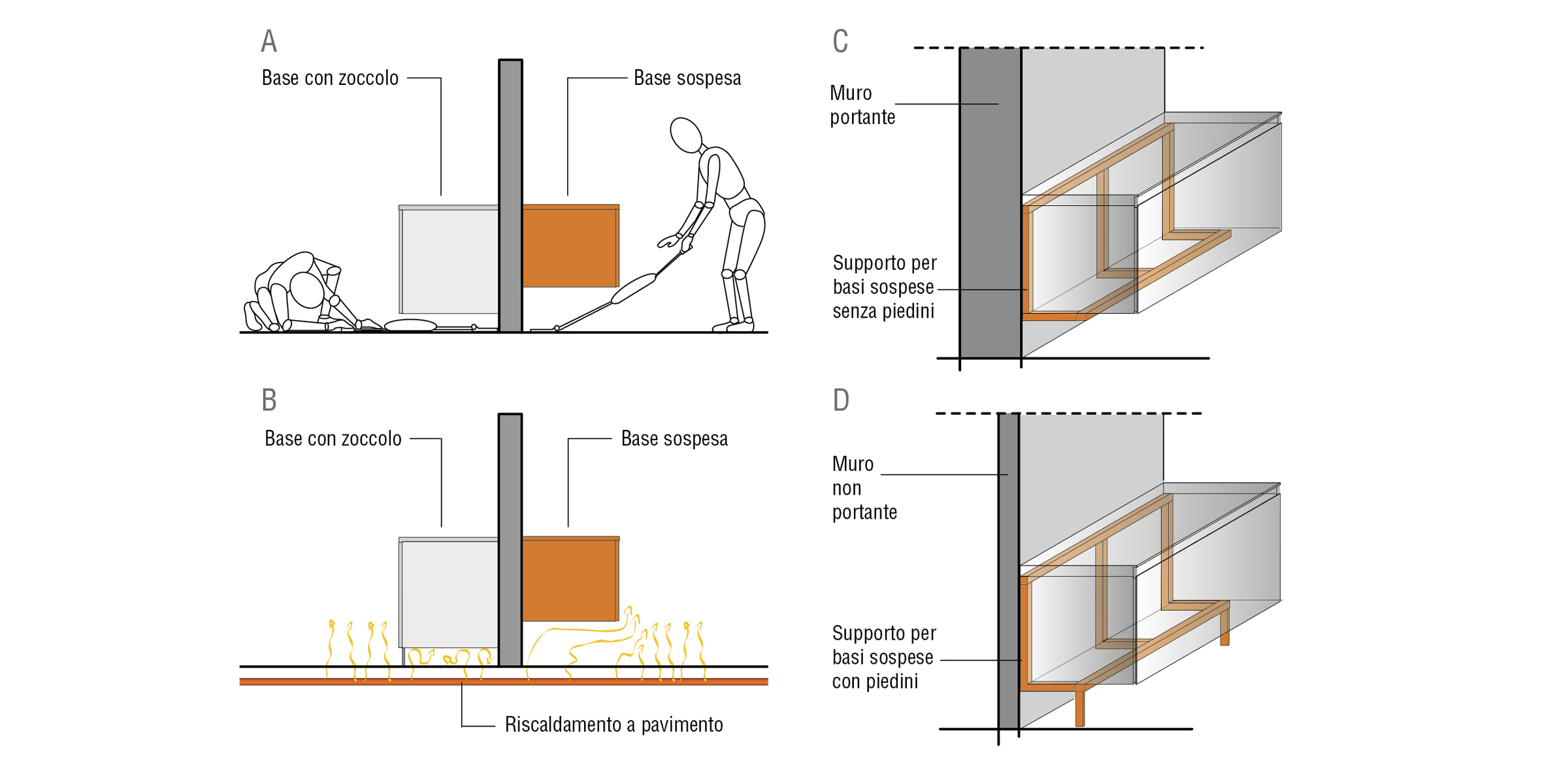
Can household appliances be installed in a wall-hung kitchen?
THE DISHWASHER
E - Nowadays it is even possible to install a dishwasher in a wall-hung base unit. An example of this is the new Smeg 60x90 or 60x60 dishwasher. We recommend the addition of supporting feet.
It is necessary to accurately define the position of the wall pipe outlet.
F - A 76x60 dishwasher can be installed in a tall unit, in a higher position compared to a traditional one which makes it more ergonomic. Its ideal position is at the right of the sink (making it easier to load).
NB: Make sure it is provided with the Acquastop device before purchasing it.
THE OVEN
G - The oven can also be fitted inside a wall-hung base unit fixed to the wall.
H - The oven is more comfortable to use and more ergonomic if it is installed inside an element that can be hung in any position on the wall. It can have a flap door that disappears below the unit when open.
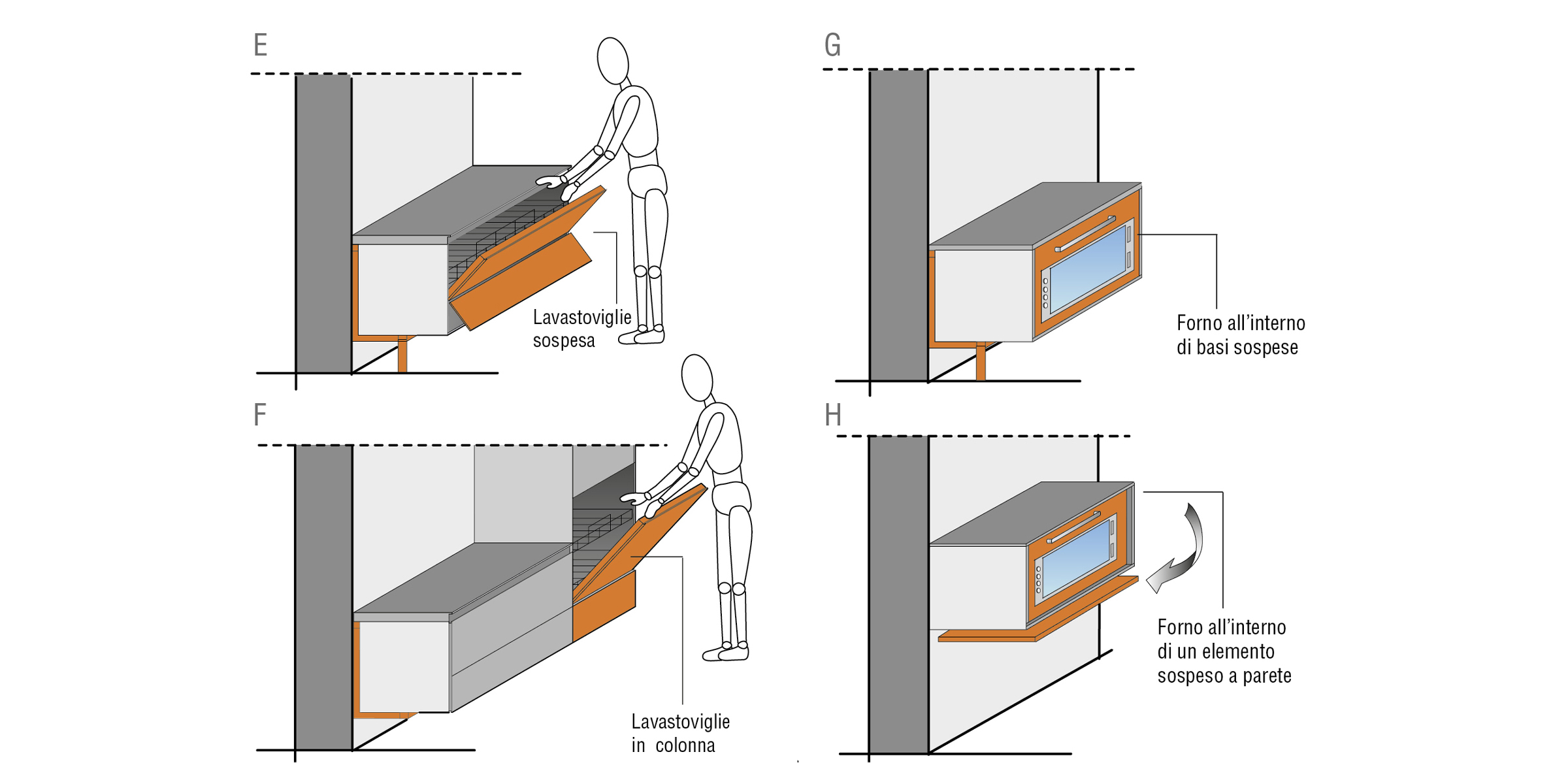
Pull-out kitchen baskets
B - With the pullout jumbo drawer, the entire contents of the base units is visible, more accessible and easy to reach.
Valcucine offers base units with full-extension, 80cm deep jumbo drawers, with or without an equipped back section.
